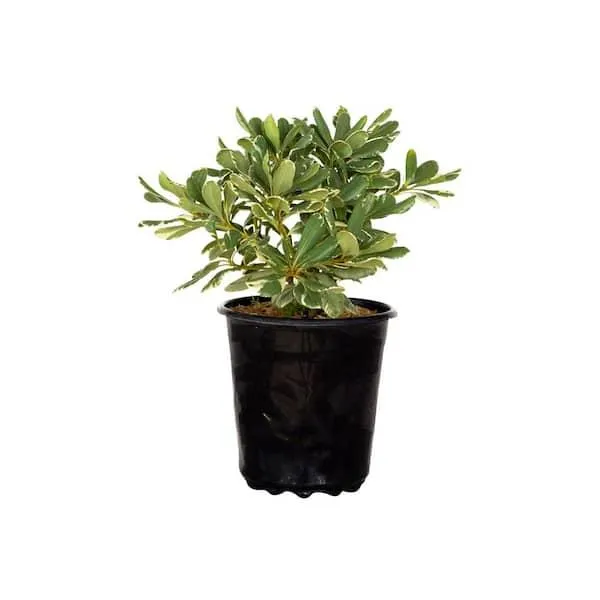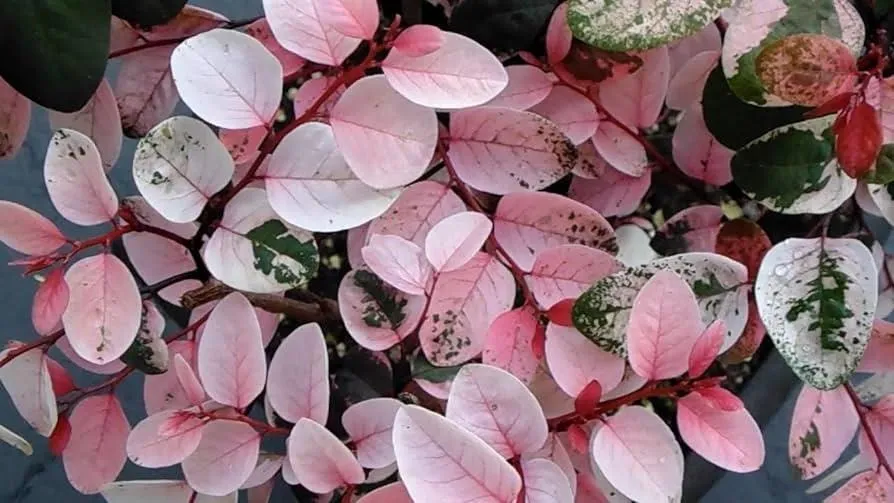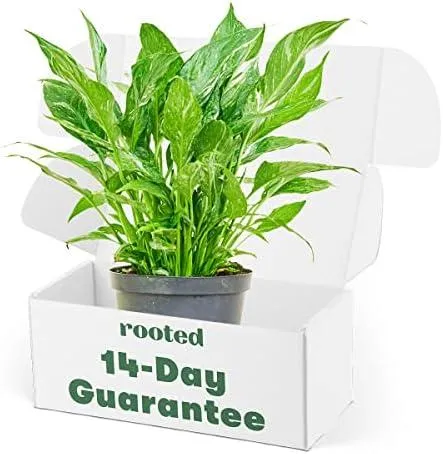Everything You Need to Know About Variegated Plants
If you’re like most plant enthusiasts and have been searching terms like “varigated plants,” chances are you have some questions about these unique varieties. In this article, I’ll break down the top things anyone wants to understand about variegation from a plant expert’s perspective.
What is a Variegated Plant?
In simple terms, a variegated plant is one whose leaves exhibit different colors other than just green. Most commonly, variegated leaves will feature yellow, white, pink or cream markings in splotches or strips against the green chlorophyll background. This color patterning is caused by less or no chlorophyll production in certain leaf cells.
Variegation occurs naturally in some plant species through genetic mutations. It can also be intentionally introduced and maintained through propagation. While not all variegated cultivars remain stable, many popular houseplants like spider plants, snake plants and philodendrons come in attractive variegated forms.
Why Do Plants Become Variegated?
The physiological cause of natural variegation is that certain leaf cells lack functioning chloroplasts, the structures that produce chlorophyll. This results in variegated markings. Scientists believe mutations in chloroplast DNA or other genes disrupt chlorophyll production in a section of leaf tissue.
From an evolutionary standpoint, variegation may offer some advantages like reduced photosynthesis in extreme sunlight, helping a plant survive. However, variegated cultivars are often propagated specifically for their ornamental appeal rather than natural selection advantages.
How Do You Care for Variegated Plants?
While care varies by species, variegated forms do have some unique needs due to their genetic makeup:

- Higher light: With less chlorophyll, they photosynthesize less efficiently and require very bright, indirect light to thrive.
- Temperature control: Warm temperatures tend to cause loss of variegation over time in many cultivars.
- Fertilizer: Apply half the recommended dose and frequency to avoid stressing the variegated parts prone to burn.
It’s also important to understand variegation may not remain perfectly stable through successive propagations. Occasionally a reversion can occur where a non-variegated green shoot emerges. Simply prune it off to maintain the plant’s variegated appearance.
Common Variegated Houseplant Varieties
Here are some of the most popular variegated indoor plants enjoyed by many plant parents:
- Spider plant (Chlorophytum comosum ‘Variegatum’) – Crisp white stripes and splotches on arching green leaves.
- Philodendron (‘Hope’, ‘Autumn’, etc.) – Thick leaves featuring creamy edges and splotches.
- Dieffenbachia (‘Tiki Torch’, ‘Camille’) – Bold white or yellow variegation on large tropical foliage.
- Pothos (Epipremnum aureum) – Golden or bright white marbling on heart-shaped leaves.
- Chinese evergreen (Aglaonema) – Broad leaves sported in white, pink, or yellow color patterns.
Using Variegated Plants in Home Decor
Beyond just admiring the striking foliage, variegated plants add visual interest wherever they’re placed in a home. From a design perspective, their mixed green-and-white leaves act as a natural way to:
- Highlight or draw attention to specific areas like a kitchen window or living room corner.
- Tie together a color scheme by echoing white accents in furniture, art or other decor elements.
- Lift plain green foliage with a gorgeous splash of low-maintenance color.
- Frame entryways, bathroom mirrors or provide a pops of pattern on fireplace mantels.
Variegation level and patterns vary tremendously between cultivars. So whether you want subtle or bold, search online or specialty nurseries to find the right variety for any decorating needs.
Common Issues with Variegated Plants
While strikingly beautiful, variegated foliage does come with some potential downsides compared to all-green types:
- Slower growth: With less chlorophyll, variegated plants tend to grow more slowly and remain more compact.
- Pruning requirements: You may need to trim off occasional non-variegated green reversions to maintain appearance.
- Lower tolerance: Their variegated areas are prone to burning if overexposed or overfed fertilizers.
- Higher price: Variegated cultivars generally cost more due to their ornamental appeal and slower mass production.
Nevertheless, for visual impact indoors, variegated plants are sure to bring joy for any plant parent. With care tailored to their light and stress needs, they make lasting home accents.

Personal Experience with Variegated Beauties
Speaking from experience in my plant collection, variegated spider plants have basically become my signature plant! I find their lacy white-striped leaves beyond stunning. A variegated spider used to hang in my bathroom, sort of framing the mirror space. Someone once commented how it added like a cool element of texture. From then on, I was hooked exploring other variegated types for decoration.
I kinda wish my monstera deliciosa had some variegation going on – those huge iconic leaves would look insane patterned too! Maybe science will find a way eventually. For now, I’ll settle for the pretty variegated philodendrons dotting my plant shelves. Whenever I’m feeling stressed, I like to just observe their unique foliage designs and appreciate nature’s crazy mutations, you know?
In summary, while variegated plants require some extra care, their unique beauty makes them totally worth it in my book. I’d love to hear about anyone else’s experiences growing or using variegated plants – feel free to share in the comments!
Final Thoughts
I hope this extensive overview has answered any questions you may have had about what causes variegation, popular varieties to consider, their care requirements, and uses in home and garden design. While variegated forms can be more challenging than all-green cultivars, their visual appeal makes them a treasured addition for plant lovers.
If you’re ready to explore variegated plants further, I’d recommend starting with an easy variety like pothos or philodendron to get the hang of their preferred growing conditions. Be sure to post pictures as your collection grows – I’d love to see what beauties you decide to add! Thanks for reading and happy planting.
Common Variegated Houseplants
| Name | Sunlight | Soil | Care |
|---|---|---|---|
| Calathea makoyana | Medium | Well-draining | Moderate watering, high humidity |
| Dieffenbachia | Low to medium | Rich, well-draining | Warning: toxic to pets, moderate watering |
| Goldfish plant | Medium to bright | Well-draining | Tolerates low light, water 1x per week |
| Marble queen pothos | Low to bright | Well-draining | Vigorous grower, tolerant of neglect |
| Philodendron ‘Birkin’ | Medium to bright | Rich, well-draining | Tolerates low light, water when top inch is dry |
| Polka dot plant | Medium to bright | Rich, well-draining | Droopy when thirsty, perk up after watering |
FAQ
-
What kinds of plants have variegated leaves?
Plants that commonly have variegated or multicolored foliage include pothos, philodendron, certain hostas and coleus. Ferns too can have leaves with unusual patterns.

-
How does variegation happen in plant leaves?
Variegation occurs due to a genetic mutation that stops chlorophyll production in some areas of the leaf. So instead of being green all over, parts remain white or yellow. Though scientists aren’t certain what causes these mutations, cool temperatures may play a role in some cases.
-
Do variegated plants grow more slowly?
For the most part, variegated foliage doesn’t hamper a plant’s growth rate. However, they get less sunlight coverage since portions aren’t green. Perhaps due to this, they may not grow quite as large or full as their solid green cousins. Still, many gardeners find the patterns well worth it for the visual interest.
-
Is the variegation permanent?
Usually yes, but on occasion a sport or growth mutation can cause a formerly patterned leaf to revert back to being all green. Gardening experts advise keeping an eye out for any signs of reversion and removing affected branches to keep a plant’s variegation consistent. Most stay true to form if grown in conditions they favor.
-
Do any plants lose their variegation in winter?
Some variegated plants like holly and euonymus may lose their patterning in fall and winter as the days grow shorter. Nevertheless, the markings tend to return in spring and summer as the weather warms. This seasonal fluctuation is considered normal for those particular kinds of variegated greenery. Their colorful leaves remain worthwhile for most of the year.
-
Should variegated plants be grown in full sun or shade?
Much depends on what species a plant belongs to. Generally speaking however, ones with white or yellow sections may prefer partial shade since sun exposure can cause the sensitive portions to scorch or discolor. Experimenting with a small specimen first can indicate its ideal light conditions. Proper siting goes a long way toward keeping variegation looking its brightest.
-
What are some downsides to variegated plants?
While their attractiveness is undeniable, variegated greenery does have some potential drawbacks compared to plain green foliage. Reduced chlorophyll content can make it more vulnerable to environmental stresses and pest/disease issues. It may also demand slightly specialized care like additional protection from intense sun. However, with the right growing approach most showstoppers thrive spectacularly.

